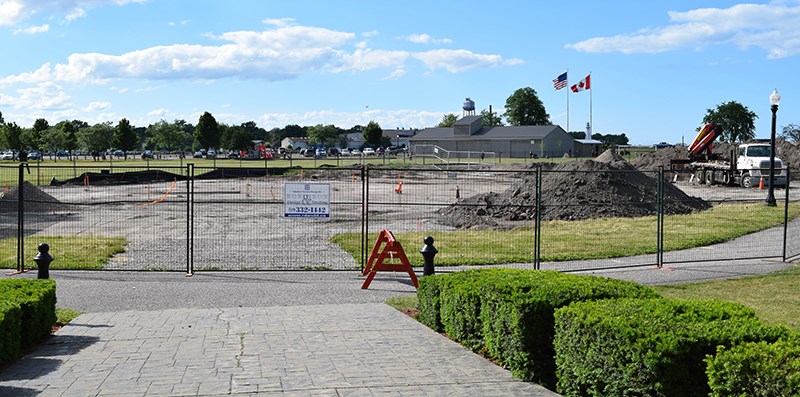Cathy Dobson
First, aboriginal artifacts were discovered.
Then it was a nest of killdeer eggs that couldn’t be moved.
In both cases, construction of Point Edward’s waterfront splash park was unavoidably disrupted this spring, setting the project back five to six weeks.
“As soon as we could, we got right back at the job,” says village CAO Jim Burns. He now estimates the splash park will open the second week of July and a field house and pavilion will be complete by the first week of August.
“When it’s all done, we are going to have a wonderful addition to the community,” Burns said.
The splash park began as an idea from the Point Edward Optimist Club five years ago. The club is contributing $100,000 toward construction and another $5,000 a year toward its operation with much of that money coming from the annual Bridge Bash (July 21 and 22).
The federal government is giving another $100,000 and the village is making up the rest, in part, with casino revenue.
The splash pad had an estimated cost of $450,000 and with the decision to add a new pavilion and field house the project totalled $800,000.
All of the bids came in on budget, according to Burns.
However, the discovery of aboriginal artifacts soon after excavation began has added another $100,000 to the cost.
“We had done testing and didn’t anticipate an aboriginal cultural deposit,” said Burns. But construction crews soon found undisturbed land that contained a large number of pottery pieces and small animal bones.
It’s not uncommon to find such artifacts in Point Edward, especially under the Blue Water Bridges where the splash park is going.
An archeological company was required to systematically sift through the site to determine exactly what was there in the presence of representatives from Sarnia’s Aamjiwnaang and surrounding First Nations.
“It was very regimented and all artifacts were turned over to the correct authorities,” Burns said.
During the dig, a killdeer nest was found right in the centre of the work site.
Killdeer like to lay their eggs in gravel areas and open fields. They are a migratory bird that cannot be disturbed by law, said Burns.
“Waiting on the eggs to hatch cost us about three weeks,” he said. “We had no choice whatsoever. We did the right thing.”
Now that work is moving ahead, the splash park is taking shape near the park entrance at the corner of Livingston and Michigan where the Alix family gazebo stands.
It’s a sizeable project in the shape of a child’s fidget spinner, said Burns. There will be three distinct areas, separating small, medium and bigger kids.
Beside the Livingston parking lot, a field house is being built with washrooms, a change room, outdoor showers and the mechanical room for the splash park.
A 1,200-square-foot pavilion is also under construction and will be similar to the Seaway Kiwanis pavilion in Canatara Park. Memorial picnic tables for the pavilion are currently on sale for $2,000 each to help with building costs.
The splash park project will add to an already busy waterfront park that attracts hundreds every day to watch the river, use the playground, enjoy French fries under the bridge, check out the fish hatchery or play soccer.
This year’s splash park season will be shorter because of the delays, said Burns. But it will subsequently be open annually from Victoria Day weekend to Labour Day.
